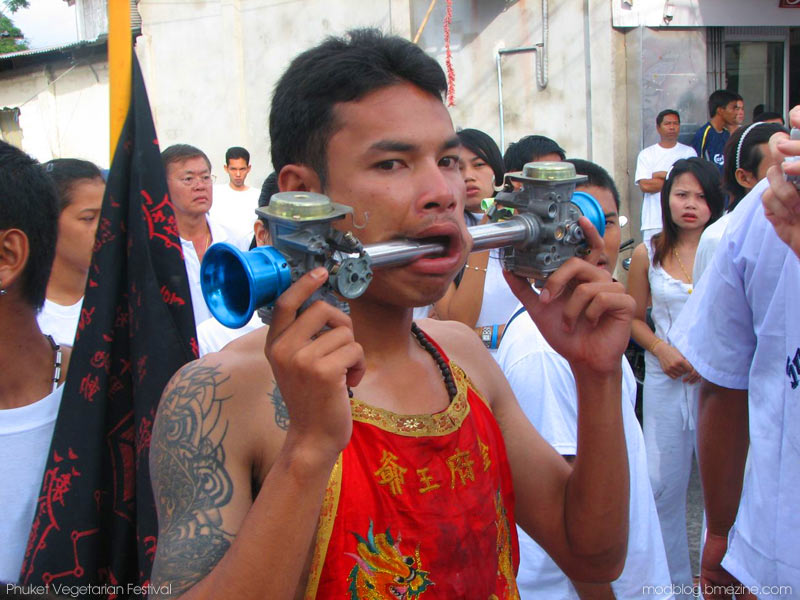Extreme Body Modification: Exploring The World Of BME
Body modification extreme BME has become a fascinating and sometimes controversial topic in modern society. From ancient rituals to modern-day art forms, body modification has evolved significantly over the years. This practice involves altering the body in various ways, often pushing the boundaries of what is considered socially acceptable. Whether it's for personal expression, cultural significance, or artistic purposes, extreme body modification continues to captivate people worldwide.
The concept of body modification is not new; it dates back thousands of years, with evidence found in ancient civilizations. These modifications were often performed as rites of passage, religious practices, or as a means of cultural identification. Today, extreme body modification has taken on new dimensions, with individuals exploring unique ways to transform their bodies.
As we delve into the world of body modification extreme BME, we will explore its history, techniques, cultural significance, and the ethical considerations surrounding it. By the end of this article, you will have a comprehensive understanding of this intriguing practice and its impact on society.
Read also:Is A New Episode Of Chicago Med Airing Tonight A Comprehensive Guide
Table of Contents
- History of Body Modification
- Types of Extreme Body Modifications
- Cultural Significance of BME
- Health and Safety Concerns
- Psychological Aspects
- Legal and Ethical Considerations
- Techniques and Procedures
- The BME Community
- Statistics and Trends
- The Future of Body Modification
History of Body Modification
Body modification has been practiced by various cultures throughout history. From scarification in African tribes to tattooing in Polynesian societies, these practices have deep-rooted cultural and spiritual meanings. The term "BME" (Body Modification Extreme) emerged in the late 20th century, popularizing extreme forms of body alteration.
Historical Context
In ancient Egypt, body modifications such as circumcision and tooth filing were common. Similarly, the Maori people of New Zealand used tattoos, known as "Ta Moko," as a way to signify rank and status within their community. These historical practices laid the foundation for modern-day body modifications.
Types of Extreme Body Modifications
Extreme body modification encompasses a wide range of practices, each with its own unique characteristics. Below are some of the most popular types:
Subdermal Implants
- Subdermal implants involve inserting objects beneath the skin to create specific shapes or patterns.
- These implants can be made from materials like silicone or metal.
- Common designs include horns, spikes, and geometric shapes.
Stretching
- Stretching involves enlarging body parts, such as earlobes or lips, using weights or expanders.
- This practice is common in certain African and Asian cultures.
- Stretching can be permanent or reversible, depending on the method used.
Cultural Significance of BME
Body modification extreme BME holds significant cultural importance in many societies. It serves as a way to express identity, connect with ancestral traditions, and challenge societal norms. In some cultures, extreme modifications are seen as a rite of passage, marking the transition from adolescence to adulthood.
Modern Cultural Practices
Today, the BME community embraces a diverse range of cultural influences. Artists and practitioners often draw inspiration from both traditional and contemporary sources, creating unique and personalized modifications. This fusion of cultures has helped to broaden the appeal of extreme body modification.
Health and Safety Concerns
While body modification extreme BME can be a rewarding experience, it is not without risks. Health and safety should always be a top priority when considering any form of body alteration. Proper sterilization, aftercare, and professional guidance are essential to minimize potential complications.
Read also:Exploring The Legacy And Influence Of Powell
Risks and Complications
- Infection: Poor hygiene practices can lead to bacterial infections.
- Scarring: Some modifications may result in permanent scarring.
- Allergic Reactions: Certain materials used in implants or piercings may cause allergic reactions.
Psychological Aspects
Extreme body modification can have profound psychological effects on individuals. For many, it serves as a form of self-expression and empowerment. However, it is important to consider the potential psychological impact, especially for those who may be vulnerable to societal pressures or mental health issues.
Self-Expression and Identity
Body modification allows individuals to express their unique identity and personal beliefs. It can be a powerful tool for those seeking to break free from societal constraints and embrace their true selves. However, it is crucial to approach these modifications with careful consideration and self-awareness.
Legal and Ethical Considerations
The legality of body modification extreme BME varies from country to country. Some nations have strict regulations governing the practice, while others have more lenient laws. Ethical considerations also play a significant role, particularly when it comes to consent and informed decision-making.
Consent and Informed Decision-Making
Practitioners must ensure that clients fully understand the risks and implications of extreme modifications before proceeding. Informed consent is a critical component of ethical practice, protecting both the practitioner and the client.
Techniques and Procedures
Extreme body modification involves a variety of techniques, each requiring specialized skills and equipment. From surgical procedures to non-invasive methods, practitioners must adhere to strict standards to ensure safety and effectiveness.
Surgical Procedures
- Subdermal implants require surgical insertion and removal.
- Piezoelectric scalpels are often used for precise incisions.
- Local anesthesia is typically administered to minimize discomfort.
The BME Community
The BME community is a vibrant and supportive network of individuals who share a passion for extreme body modification. Online forums, social media groups, and conventions provide platforms for practitioners and enthusiasts to connect, share experiences, and learn from one another.
Online Platforms
Websites like BMEzine.com have played a pivotal role in promoting awareness and education within the BME community. These platforms offer valuable resources, including articles, forums, and galleries showcasing various modifications.
Statistics and Trends
According to recent studies, the popularity of body modification extreme BME is on the rise. More people are embracing these practices as a means of self-expression and personal empowerment. Below are some key statistics:
- Over 40% of adults in the United States have at least one tattoo.
- The global body modification market is projected to reach $12 billion by 2025.
- Younger generations are more likely to engage in extreme modifications compared to older demographics.
The Future of Body Modification
As technology continues to advance, the possibilities for body modification extreme BME are virtually limitless. Innovations in materials, techniques, and medical procedures are opening new doors for practitioners and enthusiasts alike. The future of BME is bright, with endless opportunities for creativity and self-expression.
Innovative Technologies
New technologies, such as 3D printing and biocompatible materials, are revolutionizing the field of body modification. These advancements promise to enhance safety, precision, and customization, making extreme modifications more accessible and appealing to a broader audience.
Conclusion
In conclusion, body modification extreme BME is a complex and multifaceted practice that continues to evolve with time. From its historical roots to its modern-day applications, BME offers individuals a powerful way to express their identity and challenge societal norms. However, it is crucial to approach these modifications with caution, considering the potential risks and ethical implications.
We invite you to join the conversation by leaving a comment below or sharing this article with others who may be interested in the world of extreme body modification. For more informative content, explore our other articles on related topics. Together, we can continue to expand our understanding of this fascinating practice.
Sources:
- World Health Organization (WHO)
- National Institutes of Health (NIH)
- BMEzine.com


